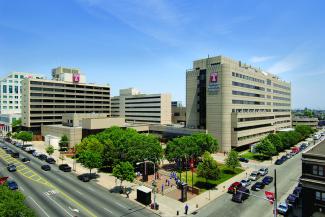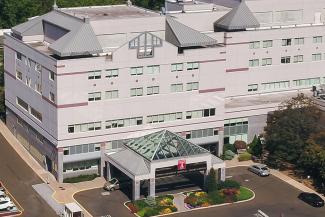Temple cardiologists use minimally invasive approaches whenever possible to diagnose and treat heart problems. Many of these procedures involve the use of a catheter—a long, thin, flexible tube that is inserted through a blood vessel (usually in the arm, wrist, leg/groin or neck) and guided into the heart or surrounding vessels. The doctor can see and guide the catheter by watching images from an X-ray machine placed above the patient. Through the catheter, physicians can perform numerous tests or conduct treatments using specialized equipment attached to the catheter’s tip.
Catheterization or "intervention," administered by a heart specialist known as an interventional cardiologist, avoids the need for more open surgery, which usually means reduced pain, risk and recovery time.
Traditionally, this procedure has been done by placing a catheter in the leg or groin area. More recently, Temple cardiologists often can utilize a different approach called transradial artery access, where the procedure is done via the wrist (radial artery).
This can be a gentler access route that is more comfortable for patients, causing less pain and potentially allowing for faster recovery. This patient-preferred access route can also be safer, with fewer complications such as bleeding.

